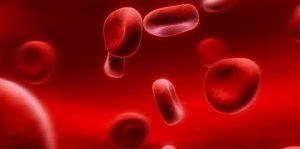How to Improve Poor Circulation in Your Legs

We decided to dedicate this article to our faithful and selfless companions: our legs. We often take them for granted and don’t take care of them. The bad news is that this can cause poor circulation in our legs.
Can you imagine how difficult our lives would be without our legs? Or if they didn’t work properly? How else would we get from point A to B? Thus, we need to learn to value and take better care of them.
A common problem in our day-to-day lives is the nuisance caused by poor circulation in our lower members. Poor circulation can have several consequences such as itchiness, aesthetic issues, pain, disability, and also complications such as thrombosis.
Read more here: 4 Natural Ways to Stimulate Blood Flow in Your Body
In this regard, thrombosis is the formation of a blood clot inside a blood vessel that can turn into an embolus (a blood clot that travels inside the body carried by the blood’s own currents). This condition can lead to severe health consequences and may even be fatal.
What are varicose veins and where do they come from?
Varicose veins are caused by a dilation of the vein due to consequent blockages. In addition, they tend to result from various genetic and hormonal factors and are most commonly seen in women.
Other contributing factors include obesity, pregnancy, and any number of bad health habits. They all prevent good blood circulation and produce a build-up that causes veins to increase in size.
What are some preventative measures I can take?
Swimming and long bike rides are highly recommended for the prevention of varicose veins. When you’re resting, you should raise your legs to improve blood flow and prevent the build-up of blood.
We should also avoid exposing our legs to too much heat. In this regard, we shouldn’t try to sunbathe at the hottest hours nor take very hot baths. It’s better to go for looser-fitting and comfortable clothing. Forgo tight pants that limit blood circulation.
Discover: Benefits of Elevating Your Legs For 20 Minutes Per Day
People who suffer from varicose veins shouldn’t wax their legs. Massages are also beneficial, as long as they aren’t too hard or rough. They should be performed by a specialist. If not, they might aggravate the symptoms.
Nutrition and good remedies for poor circulation
Vitamin E is highly recommended for people who suffer from circulation problems. Cayenne pepper cream can also be externally applied to improve this condition. Niacin or vitamin B3 relaxes the veins and improves circulation. Artichoke extract also helps reduce arterial pressure and the chances of suffering from arteriosclerosis.
Here are some other natural remedies that may help improve poor circulation:
- Ginkgo biloba: Helps dilute veins and in this way improve blood circulation.
- Garlic: Helps reduce the chances of blood clots.
- Cat’s claw: It helps diminish the blood’s coagulative capacities.
- Horsetail: Acts as a diuretic and may improve circulation. Extract horsetail essence by boiling 100 grams of dried horsetail per liter of water for 30 minutes and drink a few glasses a day.
- Witch hazel: Witch hazel massages or rubs can relieve leg pain and swelling caused by swollen veins.
- Horse chestnut: Consume a tablespoon in one glass of water a few times a day.
- Argan oil: You can consume it raw in salads.
- Willow: Consume an infusion of one small tablespoon of extract per glass of water every two days.
Make sure to try them out!
This text is provided for informational purposes only and does not replace consultation with a professional. If in doubt, consult your specialist.








